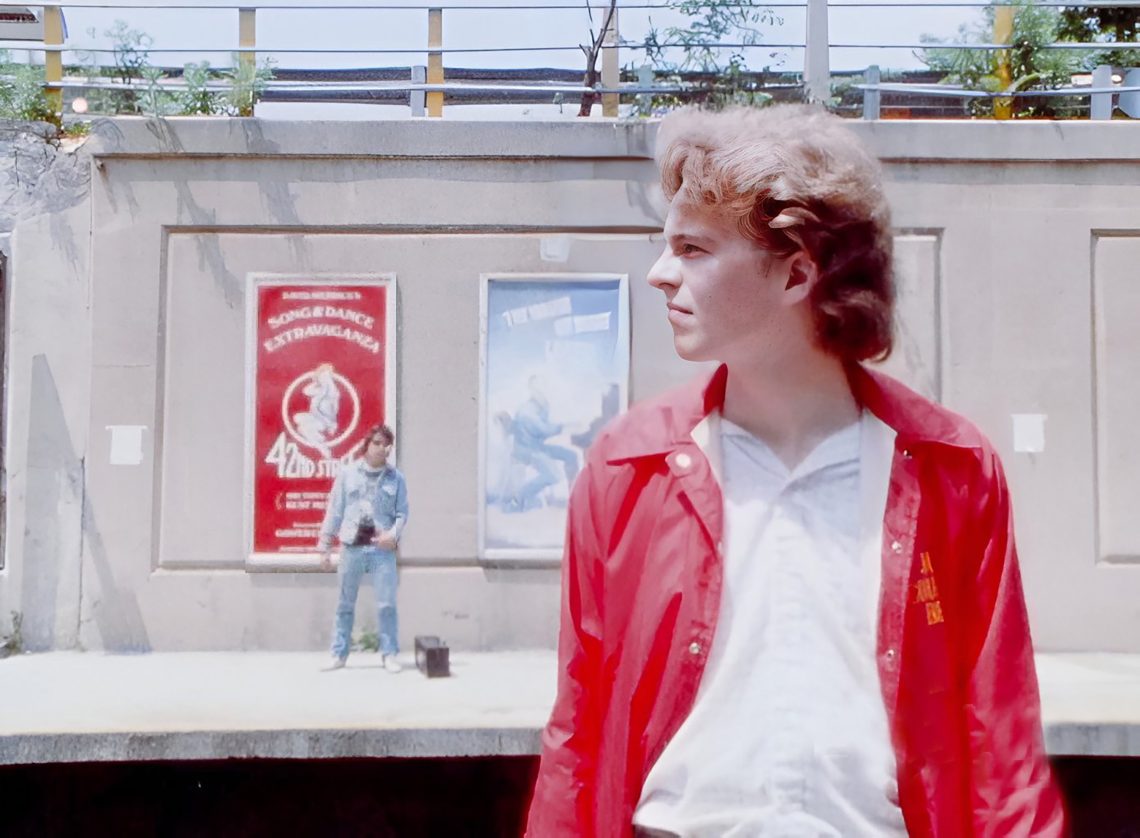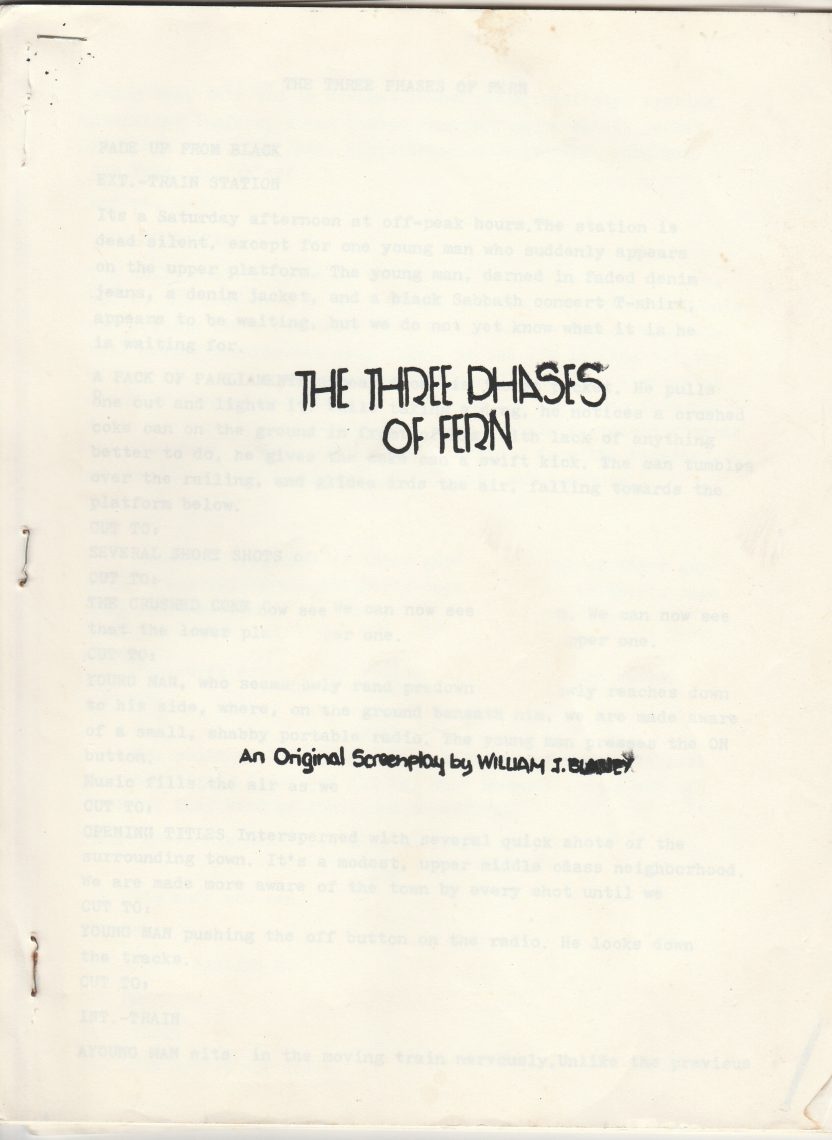
During Bill Blaney’s senior year at Temple in 1986, his film major’s final project was creating a short film. There was no length requirement, yet Blaney decided to shoot and submit a 45-minute film: “Three Phases of Fern.”
“I decided if I’m gonna go to film school, I’m going to try to do something while I have the equipment, everything,” said Blaney, a 1986 film alumnus. “I was going to do something a little more ambitious.”
Nearly four decades after filming, “Three Phases of Fern” was shown at the Long Island International Film Expo in July and went on to win Best Short Film. Blaney has since been accepted to the New York Long Island Film Festival which begins in October.
“It was just so interesting because it was done so long ago, and then he re-edited it during COVID,” said Debra Markowitz, president of the Long Island Film-TV Foundation. “A lot of really cool stuff came out during COVID-19 including things like this — older films.”
The film, which taps heavily into late-1970s and early-1980s nostalgia, follows Jim Fern and his friends in high school. Fern navigates lust and teenage angst as the people around him progress deeper into the drug culture of Manhasset, New York.
Inspired by his high school days as a member of the Bleacher Creatures, a notorious social group known for their drug habits, disruptive behavior and all-denim and band-tee style, Blaney created a narrative about their dynamic.
Teenage Blaney was too ambitious to adapt to their lifestyle long-term, but he always thought they were an interesting sociological crowd.
“It’s a lot of fun at first to meet a lot of new people, but there was always just kind of this dark cloud for me over that whole crowd,” Blaney said. “I just think it was just a lot of drugs going around, and it probably was not gonna work out well for some of those folks, and I was always very goal-oriented.”
In “Three Phases of Fern,” the Manhasset locals identify the Bleacher Creatures as the students who hassle the teachers and don’t do their homework. As Fern begins to fall in with them, the film’s color palette turns to black and white.

“We shot this to be as cinematic as we could make it, so that was honestly my goal,” Blaney said. | COURTESY / BILL BLANEY 
Toward the end of the film, Fern is devastated to learn his friend is hospitalized, but the rest of the group is more concerned about their cocaine supply | COURTESY / BILL BLANEY
“I’ve always kind of seen this as a reverse Wizard of Oz,” Blaney wrote in an email to The Temple News. “Once he gets into that new world, it’s not as familiar and inviting anymore.”
Toward the end of the film, Fern is devastated to learn one of their friends is in trouble, but the rest of the group is more concerned about their cocaine supply. Fern then has to decide whether to remain a Bleacher Creature or to part ways from the group.
Blaney’s younger brother Rich Blaney, now a screenwriter, acted in the film as a Bleacher Creature and remembers the local excitement surrounding the film.
“This was a situation where my brother was able to not only coerce me and some close friends to be in this, but a lot of other people in the neighborhood,” Rich Blaney said. “I talked to people that I knew because he needed extras in certain scenes and everybody was willing to participate in this project.”
During the course of nine 15-hour days, Bill Blaney shot in Manhasset and other nearby spots, Manhasset Press reported. One night, while Blaney was shooting a basement party scene, peers showed up anticipating a real party.
“They were swarming our garage, so we had to find drinks for everybody and keep them happy so they wouldn’t start tearing the place apart when they realized it wasn’t really a party,” Rich Blaney said.
Once he finished filming, Bill Blaney had spent more than three months traditionally editing the film — cutting and splicing and joining pieces back together to create the final product. However, after submitting the film for grading, he noticed some obvious mistakes that were too time-consuming and costly to address post-graduation.

During 1986 Temple alum Bill Blaney’s senior year of college, his communications theater major required him to submit a short film for his final project | COURTESY / BILL BLANEY 
“I wrote a 35-page script, I put together two-thirds of the film and storyboards and even did a shooting script,” Blaney said. | COURTESY / BILL BLANEY
The film went untouched and was seemingly lost for nearly four decades. Then, during the COVID-19 pandemic, Bill Blaney rediscovered the film while cleaning out a closet and let friends and family view it for the first time in 37 years.
After receiving positive feedback, he decided to send it to various film festivals in hopes “Three Phases of Fern” would be picked up. He didn’t submit to win any awards; he just wanted to see his film on the big screen.
“I was looking for ways to get it in some place where, for the first time, I can actually see it on a big screen because that’s how we shot it,” Blaney said. “We shot this to be as cinematic as we could make it, so that was honestly my goal.”
While initially watching the film, he was disappointed with some of the errors and discarded it as a failure, but with the power of digital editing, Blaney created a new narrative and path for the film.
“I decided to send it out to get a digital copy as sort of a side project to see what I could do about getting rid of all the things that drove me crazy when I was younger,” Blaney said. “I finally looked at it and said, ‘Okay, well, there you are, that’s the film I originally intended to make.”


Be the first to comment